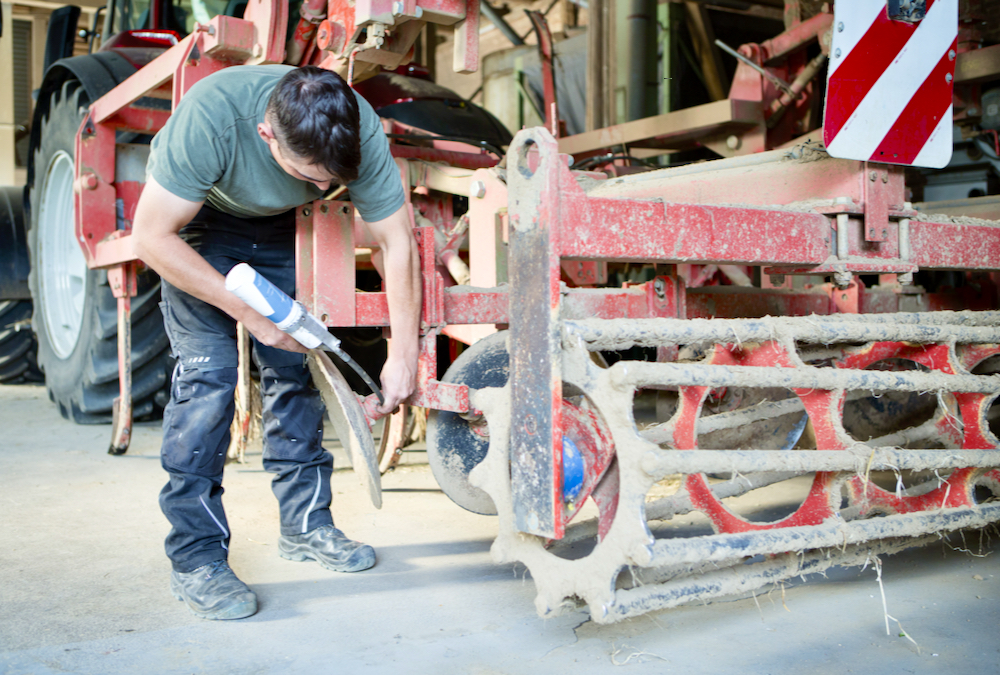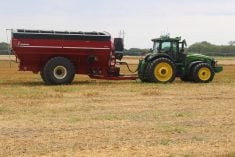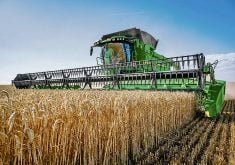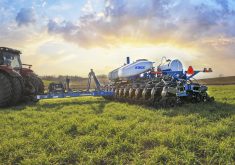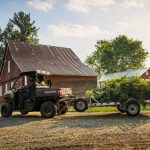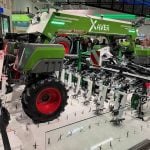When the pandemic really started to bite in 2020, Mark Brock, a Perth County grain grower, did a risk assessment on his farm. He and his colleagues highlighted a lack of backup inputs and machinery parts as major vulnerabilities.
In response, they increased stocks of both vital components. Parts inventory went from $20,000 or $30,000 in value to somewhere around $100,000 – just in case.
Why it matters: As supply chain disruptions continue, it might be time to abandon just-in-time thinking and stockpile more equipment parts on the farm and at the dealership.
Read Also

Footflats Farm recognized with Ontario Sheep Farmers’ DLF Pasture Award
Gayla Bonham-Carter and Scott Bade, of Footflats Farm, win the Ontario Sheep Farmers’ 2025 DLF Ontario Pasture Award for their pasture management and strategies to maximize production per acre.
“We were so used to just-in-time parts and inventory. Some of the common stuff we were used to being there wasn’t,” says Brock. Though he has not experienced major part-sourcing issues, many friends have.
“Do we have to keep a spare tire around? We start looking at that. We’ve never had to do that before.”
Supply disruptions have piled up, according to John Schmeiser, chief executive officer of the Western Equipment Dealers Association. From microchips and raw material shortages to labour strikes and blocked borders, a situation that equipment dealers’ thought would get better might actually be getting worse.
“Inventory is low. Manufacturers are having a hard time sourcing parts. Suppliers are having a tough time getting raw materials,” says Schmeiser, adding recent border disruptions have “added additional stress we don’t need.
“The saving grace is the border isn’t being blocked during [seeding or harvest]…If we faced delays at that time, it would be disastrous for our customers and our industry.”
There are some positive aspects to the ongoing equipment and parts shortage, though. In Saskatchewan, for example, Schmeiser says provincial policy requires equipment manufacturers to maintain parts depots, which has been a welcome buffer for farmers.
The same might be said for those in eastern Canada, though greater consolidation has made the situation more challenging.
“At the same time the vast majority of parts are coming from somewhere else…in the long term can we refill those parts depots?” asks Schmeiser. He said western depot stocks are about 80 per cent full, rather than the usual 95 per cent.
Dealers have been creative to keep customers supplied. Robbing other machines for specific parts, then temporarily retiring the piece of equipment from the lot is not unheard of, Schmeiser says. Neither are trips to salvage yards.
Like the provincial inventory requirements in Saskatchewan, every equipment dealer in Canada must have an average of $1 million in value of parts on hand at all times. This, too, has cushioned the industry.
“Typically, our supply chain issues are non-existent,” Schmeiser says. “The capacity and investment has been there. We are just in supply chain issues we have not seen since World War II.”
These are strange days indeed, says Brock, but ones that should prompt the farm community to rethink its expectations.
“I think agriculture has to regroup a bit and ask, ‘how do we deal with these challenges?’ We can’t expect to drive to the dealer and see five feederhouse reversers for a combine sitting there. There might be one. Or there might be two but they are at different stores and you have to drive to them or wait a day.”




